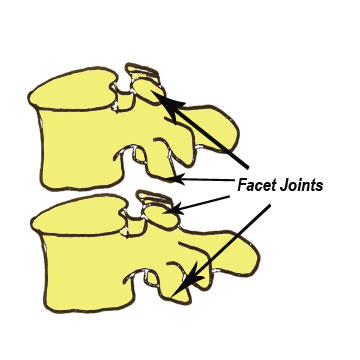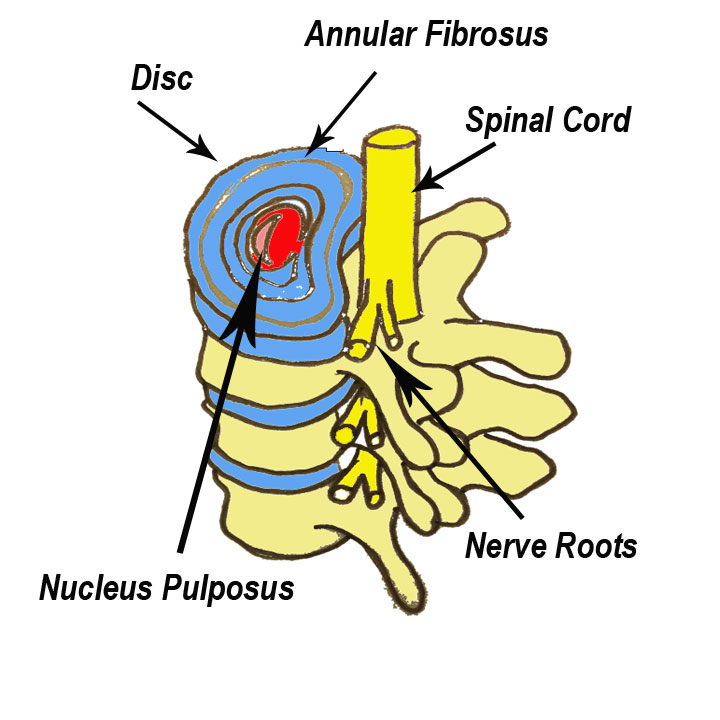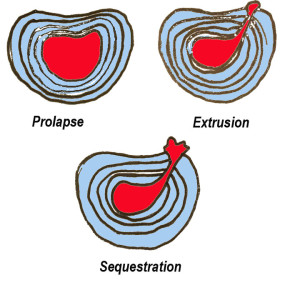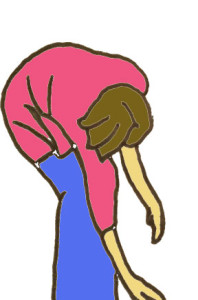Back in 2007 my first week working in a Rehabilitation office was intense. There were 2 cases of disc herniation in my first day and I remember them well. Both cases had severe pain and were on the verge of tears. It was pain that they had never experienced before and this was their last resort before surgery. I really wasn’t sure if they would get better because of the amount of pain they had but each treatment they had they felt improvement. After 4 weeks they were much better and it was such a transformation in their personalities from the first day I met them from being depressed and hopeless to pretty much being how they probably were before I met them. That was seven years ago and I still see them once in awhile and they have never had a problem with that since.
The spinal joints are quite complex. There are three joints within a spinal joint. The 2 facet joints and the disc joint. The disc joint has three parts: the annulus fibrosis, the nucleus fibrosis, and vertebral endplate.
The disc allows movement, absorbs shock and bears weight, and provides space for the intervertebral foramen for the nerves to pass through. The annulus fibrosis is made of many layers of fibrocartilage and each layer has many fibers in different directions to resist movement in different directions. The nuclues pulposus is in the center of the annulus fibrosis. A disc bulge or herniation is when fibers of the annulus fibrosis starts to crack or thin and the nucleus pulposis is allowed to bulge through the annulus.
There are different degrees of disc bulge or herniation. A protrusion is when the disc bulges but no fibers of the annulus have been torn. A prolapse occurs when some of the fibers of the annulus are torn while in an extrusion the nucleus has broken through the annulus and presses into the spinal canal. And the most severe, a sequestration, is when the annulus has been ruptured and parts of the annulus and nucleus extend outside the disc.
The disc is really quite strong and resilient and usually if someone presents with a disc problem there was some form of truama such as whiplash or fall. The disc natuarally starts to dry out and thin as we age. Postural issues can add to increased pressure on the discs and when combined with elements of injury and age can add to degeneration of the discs.
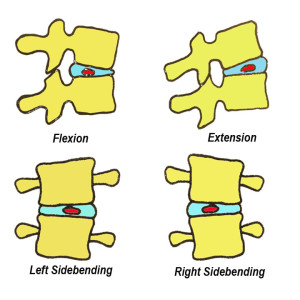
In normal spinal movement when the vertebrae on top moves it pushes the disc material in the opposite direction. In flexion (forward bending) the disc material moves toward the back. In extension (backward bending) it pushes the disc material toward the front. In left sidebending it pushes the disc material to the right.
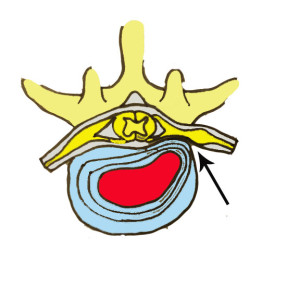
A posterolateral disc bulge is the most common area to be impinged because it is the path of least resistance. The most severe is when the disc shoots back onto the spinal cord which is harder to do because it must break through dense ligaments in the area but it can happen.
Interestingly, the disc bulge can happen anywhere and is really only a problem when it presses on nerves. For example if the bulge happens anteriorly(in the front) there are no nerve structures. The biggest problem is when it bulges posteriolaterally and presses on nerve roots. And the most severe problem is when it pushes directly back (which is hard to do because it has to break through heavy ligaments) and presses on the spinal cord. When this happens this is very serious and requires attention immediately.
The discs are kind of like balloons wedged between the vertebrae in the sense that when the vertebrae move it pushes the disc material in the oppossite direction.
The movements that push the disc toward the nerve roots are flexion (forward bending) with sidebending.

A rounded back posture (A) is flexion (forward bending) at the spinal joints. This is undesirable as it pushes the disc material toward the back and can increase chances of nerve impingement. In figure B we see a more straight back and the forward bending is coming from the hip joint and not the spinal joints.
Massage therapy combined with other disciplines that will help with getting the disc to go back into place can be really helpful. Massage won’t do anything for the discs directly but muscle spasms can add to pressure on the vertebrae increasing disc pressure and also trigger points in the area can also cause problems in the area. Providing relief of the soft tissues around the area can be helpful for providing some relief from pain. Disc problems vary in their severity. I have seen many people diagnosed with herniated discs and it was fairly easy to resolve while others must find ways of coping with chronic pain that comes with the degeneration ( and massage can be one of those ways). This is a very good reason why when working with a massage therapist having approval from your doctor and communication between your doctor and therapist is important. The more information about the level of degeneration of the disc and other joint problems that can occur is extremely helpful for the massage therapist to deliver appropiate massage.

